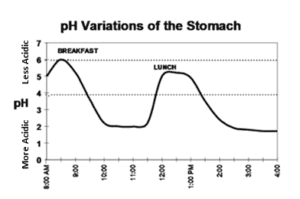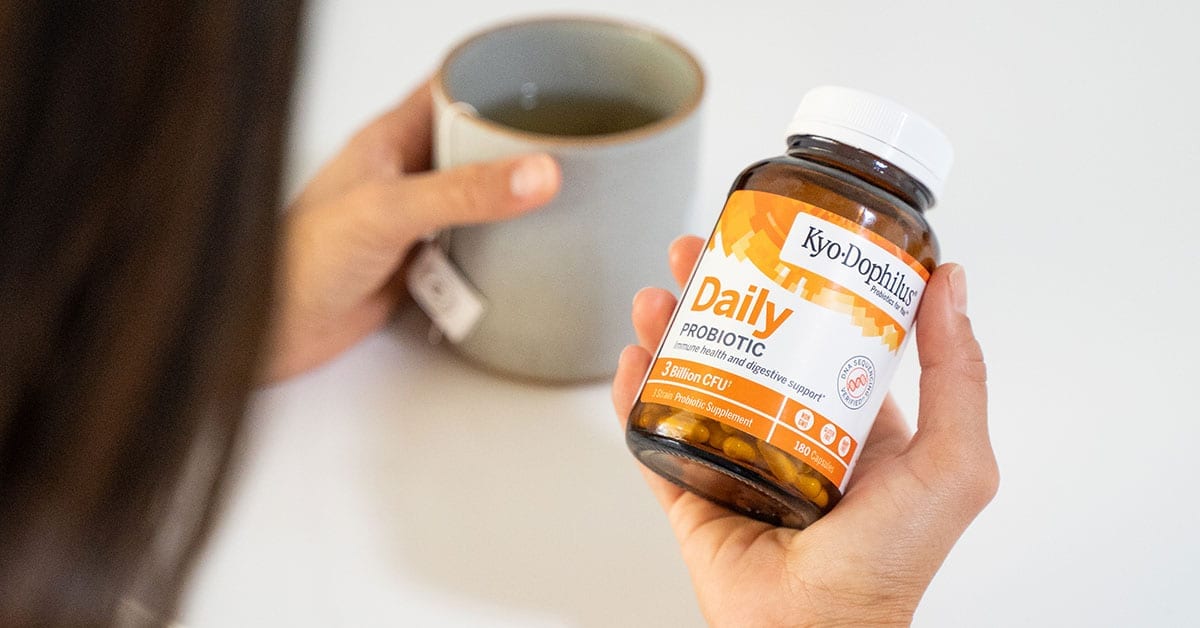So you’ve bought your probiotic supplement…now what? You know you made the right decision purchasing a probiotic, but do you know how to take care of your probiotics, how to store them, how to take them, and when they expire?
In this blog post, we will review some best practices for “caring for” your probiotics, so that you will be confident they are stored in the right way, you will know when and how to take them, and more.
Shopping for a Probiotic
As a quick refresher, when shopping for a probiotic, many people believe that more is better, when it comes to colony forming units (CFUs). So they grab whatever product boasts the highest number. There is no standard recommended daily dose for probiotics, but research suggests aiming for one to two billion live CFUs to maintain good health. If you are taking antibiotics, have digestive problems, or suffer from Candida or frequent urinary tract infections though, you may want to boost that amount.1
One more thing, when choosing a probiotic look for one that lists expiry at time of consumption, not at time of manufacture. What does “expiry” mean? “Expiry,” or expiration date, refers to a previously determined date after which something should no longer be used. The date should be stamped on the side or bottom of the bottle. This is important to look for on your probiotics label, because many times, if you continue taking your probiotic after expiration, it will not be as effective if the live cells have perished. In general, quality probiotics have a shelf life of 2 to 4 years.
How to Take Your Probiotic
When deciding how many capsules to take as part of your daily serving, it is helpful to check the label and read the instructions in the Suggested Use section. This lets you know what the proper serving size is for the probiotic you purchased. Many times, the serving size is not just one pill, but two. And some suggest taking them more than once a day.
Should you take probiotics on an empty stomach, or with food? Here is what we know. In general, probiotics should be taken with food. They should be taken with food because there are very few strains of bacteria the can withstand the harsh acidity of an empty stomach. Food dilutes stomach acid to levels that bacteria can withstand. We also know that fewer bacteria have been shown to survive in “fasted” than in fed subjects.2

The illustration on the left shows pH variations in the stomach after eating. You can see that the stomach’s pH level is higher (less acidic) after eating, which means that the bacterial strains are better able to survive.
How to Store Your Probiotic
Let’s remember, probiotics are made up of living organisms, and as such, they will survive longer when kept in a cool, dry environment. Your kitchen or bathroom cabinet is a good spot. Look for probiotics that are packaged in amber or dark color glass. This helps to protect them from moisture and light damage. And you may want to reconsider keeping your probiotics stored in your day-of-the-week pill organizer. We know there are some cool organizers on Amazon, but they could compromise the effectiveness of your probiotics, if they are exposed to light, temperature changes, and humidity. Best practice is to only keep a few days of servings in a portable pill caddy at a time. Refill from the bottle stored in a dry, cool, environment.3
Some probiotics need to be refrigerated, but if possible, choose a probiotic that is “shelf stable,” meaning they can be safely stored at room temperature, and do not require refrigeration. This makes your life a little easier, and also makes it more convenient for you to take your probiotics when you travel (because airports don’t typically have a mini fridge for you to store your supplements).
Common Side Effects When Starting Probiotics
In general, probiotics do not cause any significant side effects, have been clinically studied for decades and are generally regarded as safe. At the same time, probiotics can affect everyone differently. It’s common to experience some mild stomach upset, gas, or bloating when you first start taking probiotics. Some experts believe these fleeting symptoms are a result of the “bad” bacteria dying off in the new healthier environment. If your symptoms are bothersome, try avoiding inflammatory foods (like sugary or processed options) and load up on anti-inflammatory antioxidants instead.
If symptoms continue, it’s possible that you are taking bacterial strains that may not be compatible with your system. You may want to try a different combination of probiotics that are in line with your health goals. While this process would take a little time and trial and error to find a match, it will be worth it for supporting your microbiome and overall well-being.
Remember, take care of your probiotics and they will take care of you!
References
https://kyolic.com/healthyguides/The-Good-Gut/index.html?page=10
This article is for informational purposes only. This article is not, nor is it intended to be, a substitute for professional medical advice, diagnosis, or treatment and should never be relied upon for specific medical advice.

Share this Post